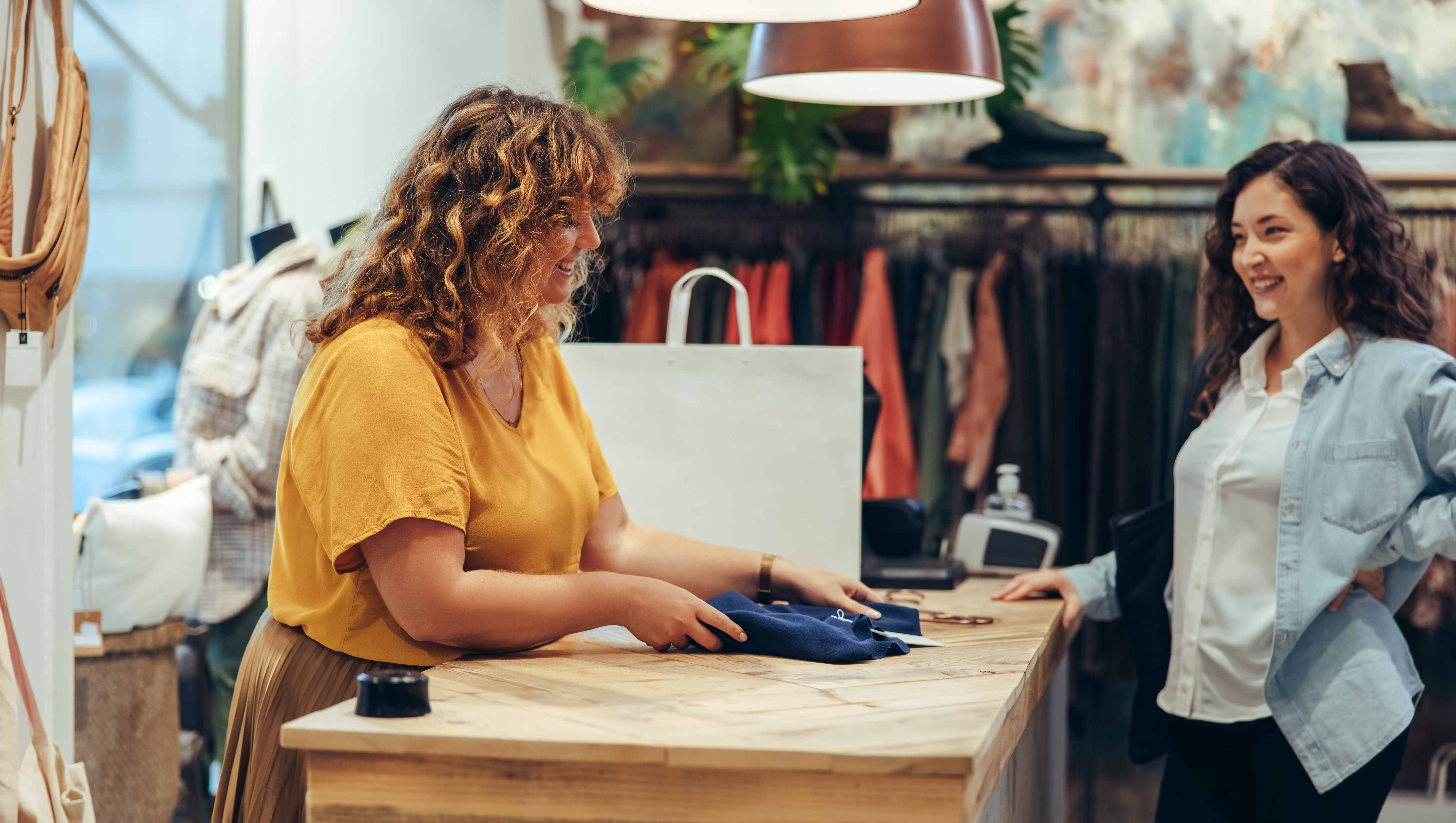3 Trends & Strategies for Developing a Leading Returns Experience in 2021
By Ken Lim, Optoro
The world is beginning to embrace a new state of normalcy thanks to the wider availability of COVID-19 vaccinations this spring. This phenomenon has not only improved consumer confidence around returning to public settings, but has also led to increased spending as they look forward to what’s next. In fact, around half of consumers who plan to splurge are pandemic-fatigued and intend to spend soon[1].
While retailers are likely focused on attracting new customers during this time, retailers shouldn’t overlook a key area for driving customer loyalty and repeat purchases: the returns process. Optoro found that 9 out of 10 people who recently made a return checked the return policy before making their purchase[2]. To improve the overall customer journey ahead of a possible purchasing surge, we’ve identified three trends and strategies for creating a leading returns experience this year.
BRICK-and-MORTAR IS MAKING A COMEBACK
The days of solely shopping online from the comfort of your couch aren’t going anywhere, given that ecommerce continues to increase over time. However, as more of the U.S. population receives the vaccine, we’re seeing a renewed drive to shop in-person at brick-and-mortar stores, plus a replenishing of wardrobes with “real” clothing.
Omnichannel retailer Williams-Sonoma recently announced plans to refocus on brick-and-mortar sales as the U.S. emerges from the pandemic. After driving 45% online growth during fiscal 2020 that offset a 24% drop in in-person sales, CEO Laura Alber acknowledged the role ecommerce played in making up for slow brick-and-mortar sales, but still predicted storefronts to be a key component of the company’s 2021 success[3]. We anticipate that more retailers will follow suit as they leverage their current real estate and online channels in tandem.

There’s now hope that we’ll return to “normal” later this year, with post-vaccination plans to travel, go out on the town, and spend time with friends. So, it’s no surprise that more than half of U.S. consumers plan to buy apparel in the coming months, making it the top category of anticipated spending, followed by footwear and beauty products, the Washington Post reported, citing NPD Group[4].
Therefore, consumer spending will likely grow and many people may return to stores for both shopping and returns. In fact, a pre-COVID survey by NRF found that 80% of shoppers prefer in-store returns, and we expect this number to rise post-pandemic[5]. However, there will be a large portion of people who will continue shopping and making returns online after becoming used to its convenience.
What does this mean for retailers? In order to adapt to this change, retailers need to have an omnichannel returns strategy that allows for easy online returns initiation AND a seamless physical store process (like curbside returns or in-store processing) – sooner rather than later.
CUSTOMER EXPERIENCE IS RELIANT ON TECHNOLOGY
In the past year, technology has dramatically changed the way retail customers engage and choose to be serviced, whether they’re shopping in-person or online. In fact, we heard from Walmart and Wayfair representatives at NRF earlier this year that the digital transformation of retail has been accelerated by 3-5 years due to the pandemic[6].
Retailers need to fully embrace today’s digital experiences as a critical component for capturing customer attention and loyalty. There are opportunities to leverage frictionless technologies at each point in the customer journey, such as:
- Wiring real-time customer survey feedback into day-to-day operations
- Incorporating digital touchpoints into physical stores
- Personalizing shopping and returns experiences for each individual consumer
- Connecting retailers with customers through live streaming (“live shopping”) and additional mobile experiences like AR & VR
- Implementing online returns portals and self-service centers
- Providing QR codes for seamless returns experiences

Consumers – and retailers – find that antiquated returns processes cause a headache. Many shoppers don’t have a printer at home and lack proper returns packaging. And many retailers who lack processing technologies are faced with slow speed to stock and low recovery on returned inventory. The seamless, digital-first experiences available to retailers today can be a huge selling point for your business and serve as a differentiator from competitors, making them a worthwhile investment.
SUSTAINABILITY IS THE FUTURE OF BUSINESS
The pandemic has led to a shift in more conscious consumerism, with 80% of consumers globally expressing increased concern about the environment, according to a recent study[7]. One retailer embracing this shift is IKEA. The company now shares where an item was responsibly sourced from, along with its materials and multi-functional purposes. They’re also looking into their own operations for ways to prolong the lives of their products and materials, and are investing more into recommerce.

Recommerce is the process of connecting returned or overstock inventory with buyers on secondary channels. This enables retailers to maximize recovery and minimize environmental impact. According to Jennifer Keesson, IKEA, US Sustainability Manager, “IKEA is investing in secondhand and buy-back and resell channels of their furniture in the US market.” Leaning in to secondhand sales is proving to be a leading strategy for those looking to find a new home for returns, improve the end-to-end returns experience, and become a circular business.
These trends are likely to stay for the duration of 2021. Retailers who choose to invest in these strategies and their returns processes will have a leg up on their competition as returns only continue to increase.
Optoro is a returns technology company.
Sources:
1. Survey: US consumer sentiment during the coronavirus crisis | McKinsey & Company | March 24, 2021
2. Is Your Returns Process Helping Or Hurting Your Customer Experience | Optoro and Retail Dive’s studioID | March 29, 2021
3. “Williams-Sonoma CEO refocuses on in-store traffic after a surge in online sales last year” | CNBC | March 18, 2021
4. Americans are starting to buy real clothes again” | Washington Post | March 18, 2021
5. “Nearly 148 million Americans plan to shop Super Saturday” | NRF | December 17, 2019
6. “The COVID-19 recovery plan will be digital: A plan for the first 90 days” | McKinsey & Company, May 14, 2020
7. “The pandemic may have changed some consumer habits permanently” | Retail Dive | April 1, 2021
 Ken Lim
Ken LimKen brings over 15 years of experience in supply chain, reverse logistics, and project management to Optoro.
From conference calls with Fortune 500 retailers to working taco lunches with refurbishment technicians at warehouses south-of-the border, Ken has seen many layers and partnerships in reverse logistics, and he collaborates with our Business Development team to bring winning reverse logistics solutions to our clients. Prior to Optoro, he spent six years at another reverse logistics company where he was responsible for an account portfolio of over $100M per year in addition to designing and managing more than $10M-worth of in-house and outsourced electronics refurbishment. He began his early supply chain career at CEB’s Operations practice.
Ken received his B.S. in Civil Engineering from Stanford University and his M.B.A. from Georgetown University. He traces his passion for the ways that business can support environmental responsibility to his time as a Peace Corps volunteer in Jamaica and continues to support that work as the vice-chair of the non-profit Friends of Jamaica. He spends his time as much as possible enjoying the woods with his wife and daughter or jogging the streets of Washington, D.C.